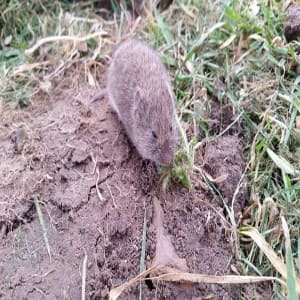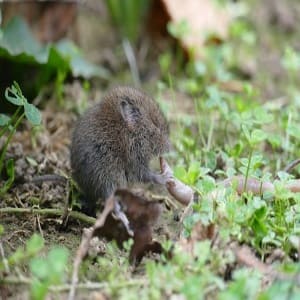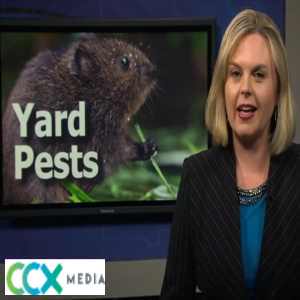Voles
CHARACTERISTICS OF VOLES IN MINNESOTA
Commonly confused with moles, voles are mammals of the order Rodentia (rodents) characterized by a single pair of continuously growing incisors in both their upper and lower jaws. Voles are grayish-brown in color, have a short hairy tail, and a slightly rounded head with small ears and eyes. They grow to be 3 to 9 inches in length. There are 23 different species of voles that live in the United States. The meadow vole is the most widespread and is commonly found throughout Minnesota. Voles in Minnesota prefer to inhabit areas with heavy plant cover that shelters them from natural enemies. Hawks, owls, coyotes, and cats all prey on voles. In Minnesota, the most successful approach to preventing vole property damage is through a dedicated vole control and prevention program.
Although their average lifespan is only 3 to 6 months, voles are prolific breeders capable of increasing in number faster than predators can eat them. Their litter sizes are typically 5 to 10 and they breed many times throughout the year. Gestation lasts for three weeks and young voles reach sexual maturity within 4 weeks. Therefore, proper vole prevention and control is extremely important in reducing population growth. Voles in Minnesota travel above and below the ground. Their paws are well-suited to digging which allows them to create shallow burrows and tunnel systems. They sometimes inhabit the tunnels of moles and gophers and often live under mulch. Voles are herbivores and have chisel-like teeth used to chew grasses, bulbs, and tree bark. They can consume more than their body weight in plant matter each day. Voles are active at all hours and do not hibernate.
VOLE PROPERTY DAMAGE IN MINNESOTA
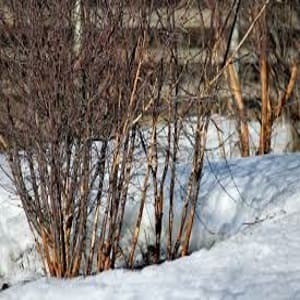
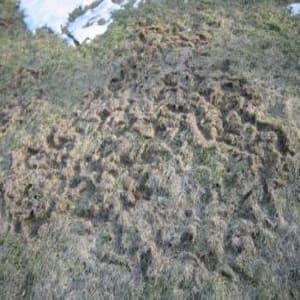
During the summer months in Minnesota, vole damage is primarily contained within gardens. When cold weather forces them to aggressively pursue scarce nutritional resources, voles often girdle small trees, ornamental plants, and bushes. This type of damage is often blamed on rabbits. Damage often appears at ground level as missing bark and plant membrane. This damage will rise higher during periods of snow. Girdling can kill young plants and is unhealthy for trees and shrubs. Voles will also burrow under trees and shrubs destroying root systems. In Minnesota, hosta plants are common targets for root damage. Plants not killed by vole damage may succumb to disease or water stress during periods of drought. Taking early vole control and prevention measures can reduce or eliminate this cold weather damage.
Lawn and turf damage commonly occurs during the winter season under the snow. Winters with lasting snow cover provide protection from predators. As a result, voles enjoy the freedom to construct elaborate and frequently used runway systems within the lawn canopy. This appears as snake-like damage when the snow melts in the spring. Lawn damage is primarily caused by feeding. Voles chew grass down to the ground, create travel wear and produce accumulations of excrement. The damage could require reseeding or sodding to repair the lawn. The most extensive and expensive winter vole damage occurs within the landscaping. Ornamental areas located around the foundation of a home or business are most susceptible. Voles may also spread disease through their urine and feces and introduce parasites onto your property. If you live in Minnesota and have vole property damage, you should take vole control action through a professional vole control and prevention program.
ADDITIONAL RESOURCES
A few additional resources to help you learn more about voles are as follows:
Metro Mole Control as seen on CCX Media
Wikipedia. “Meadow vole”
Minnesota DNR. “Lemmings, mice, rats, and voles”
CONTACT US
For a free, no-obligation consultation/service estimate, please complete our information request form, email us at info@metromolecontrol.com or call us at (763) 350-0331.


